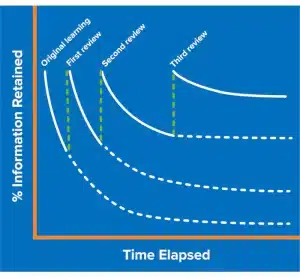Do a little bit of something. Did that work? Try a little bit of something else. Did that work? Ok, switch it up again.
If you keep switching marketing tactics, chances are you either don’t have a clear marketing strategy or you aren’t appropriately measuring the impact of what you are doing.
One of the most common marketing pitfalls is the notion that trying lots of things for a short period of time is the best way to find success. We all want quick results, and it is tempting to dabble in various tactics without committing to one coherent and well-executed strategy.
Marketing is a system – or a set of integrated, repeatable actions that can be measured and tracked, helping your team stay accountable for the goal you are working to achieve. No one wants to spend time or money on marketing that isn’t working for you, but like any system, too much change, and certainly change for the sake of change, means inefficiency.
For your marketing system to work smoothly, the foundations must be in place. Before you start changing marketing tactics, make sure these things are in place:
- A clear and compelling brand strategy – an articulated reason WHY your brand exists, the clear and compelling brand promise that you make every day to your customers, and the “secret sauce” that makes you different and better than your competitors.
- Clearly identified ideal target customers including who they are, where they are, what their pains are, how they gather information and make decisions about your product.
- A marketing plan and key messages that will both reach that target customer and resonate with them.
- A clear understanding of success and how you will measure it over time including leading and lagging KPIs. You need to be able to see that you are making progress in the marketing funnel moving the target customer from awareness, to interest, to commitment, and finally to customer/relationship.
But that sounds boring. How will I break through?
Yes, a message has to break through. But if that is all it does, it won’t help you achieve your marketing goals. Human beings are searching for messages that are relevant, helpful and interesting.
The hard work of messaging starts with really understanding your target customer – their needs, their pain points, the problems they are trying to solve, the words they use to talk about their problems. Once you land those things and craft the right message – stay consistent. Your customers are immersed in their daily lives – thinking about what’s for dinner, what to get Dad for his birthday, what do I have to do to get promoted, why isn’t my boss hearing what I am saying. On top of that, they are bombarded with upwards of 10,000 marketing messages per day.
So, yes – helpful, relevant, interesting, and consistent matter a lot. In fact, cognitive research suggests that it takes an average of seven exposures for a message to register in the minds of consumers. There is a memory model called Ebbinghaus’s Forgetting Curve that suggests we all forget rather quickly unless new information is reinforced.

So, dig deep on understanding the needs, desires, preferences, and pain points of your target customer. Craft a message that is resonant, helpful, and interesting. Then make sure you are building to at least 7 touches before you even think about moving on to something else.

